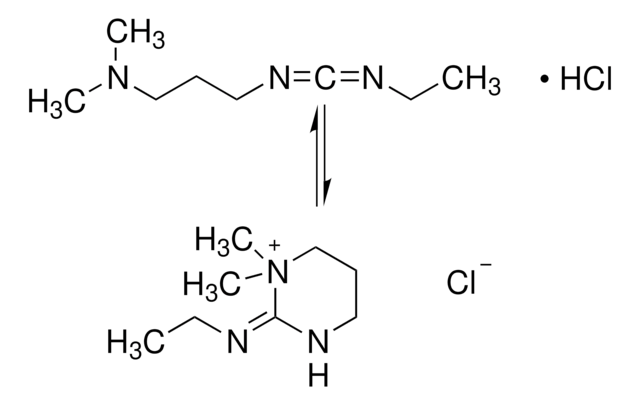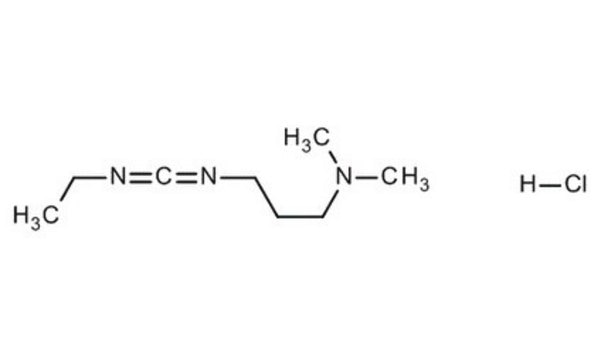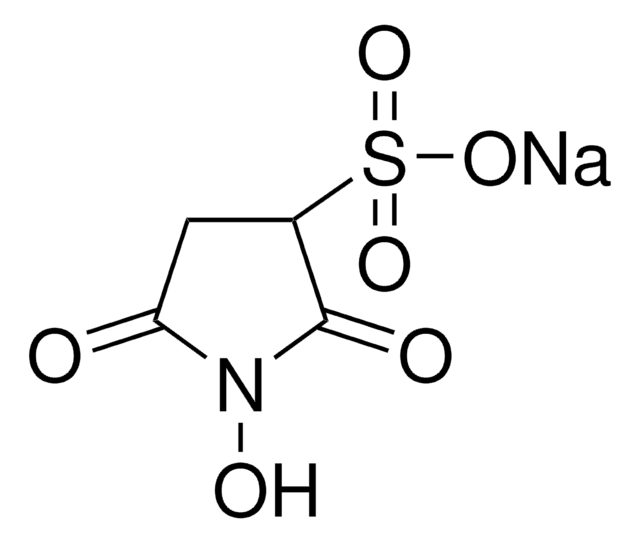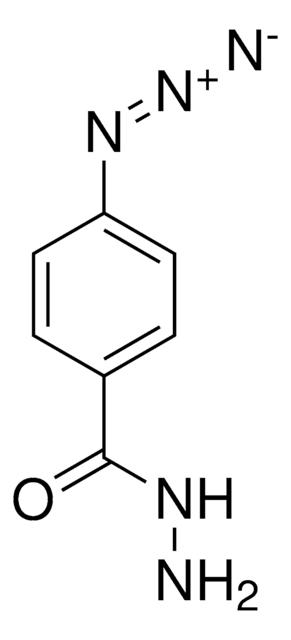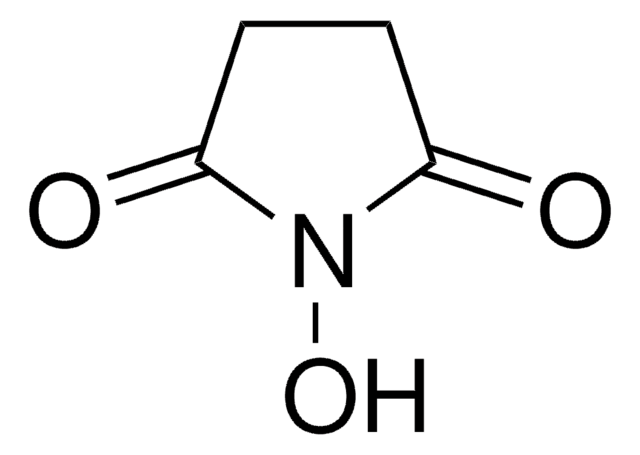39391
N-(3-Dimethylaminopropyl)-N′-ethylcarbodiimide
≥97.0% (T)
Synonym(s):
N-Ethyl-N′-(3-dimethylaminopropyl)carbodiimide, EDC, WSC
About This Item
Recommended Products
Quality Level
assay
≥97.0% (T)
form
liquid
reaction suitability
reaction type: Coupling Reactions
refractive index
n20/D 1.461
density
0.877 g/mL at 20 °C (lit.)
application(s)
peptide synthesis
storage temp.
−20°C
SMILES string
CCN=C=NCCCN(C)C
InChI
1S/C8H17N3/c1-4-9-8-10-6-5-7-11(2)3/h4-7H2,1-3H3
InChI key
LMDZBCPBFSXMTL-UHFFFAOYSA-N
Related Categories
General description
Application
signalword
Danger
Hazard Classifications
Acute Tox. 3 Dermal - Acute Tox. 4 Oral - Aquatic Acute 1 - Aquatic Chronic 1 - Eye Dam. 1 - Skin Corr. 1A - Skin Sens. 1A - STOT RE 2 Oral
Storage Class
6.1A - Combustible, acute toxic Cat. 1 and 2 / very toxic hazardous materials
wgk_germany
WGK 3
flash_point_f
Not applicable
flash_point_c
Not applicable
ppe
Faceshields, Gloves, Goggles, type ABEK (EN14387) respirator filter
Certificates of Analysis (COA)
Search for Certificates of Analysis (COA) by entering the products Lot/Batch Number. Lot and Batch Numbers can be found on a product’s label following the words ‘Lot’ or ‘Batch’.
Already Own This Product?
Find documentation for the products that you have recently purchased in the Document Library.
Customers Also Viewed
Articles
Carbodiimide-mediated peptide coupling remains to the most frequently used technique.
Collagen molecules play a critical role in tissue architecture and strength, and in cell-matrix interactions as insoluble ligands to regulate the diverse phenotypic activities of cells.
Our team of scientists has experience in all areas of research including Life Science, Material Science, Chemical Synthesis, Chromatography, Analytical and many others.
Contact Technical Service